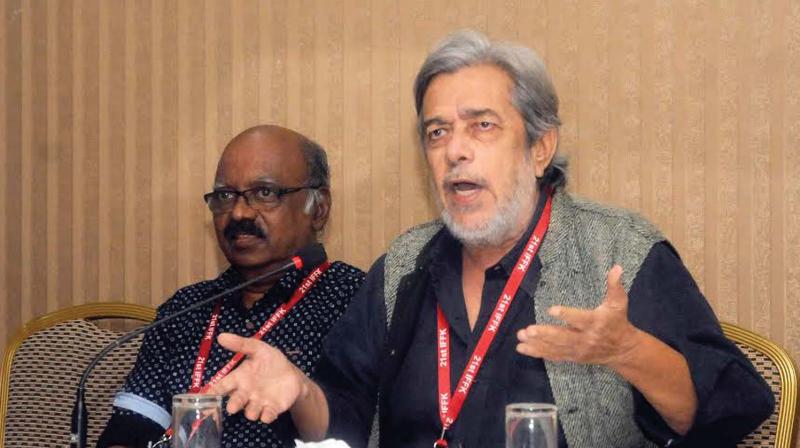Budget filmmakers fend for themselves

Thiruvananthapuram: Low-budget filmmakers of 2016 can easily compare notes with that from 1970s or 80s. For neither would get theatres, according to filmmakers who attended the seminar on low budget film making organised by GRAFTII, FTII alumni association, as part of IFFK 2016. IFFK artistic director Bina Paul, in her introduction, said, “With the coming of the digital, everyone thought film-making is going to be cheap, and everybody is going to make films. But that did not happen.”
There are exceptions though. ‘I.D.’, which is being shown at IFFK now, was made with just Rs 12 lakh. Netflix, acquiring important content in Indian cinema, purchased the rights of the movie by Kamal KM and Lisardo Martinez. They were paid three times their production cost. One would think they struck it lucky. But the team, inspired by film movements like Odessa and Chitralekha Film Societies, had started out with a philosophy which kept capitalist liabilities at bay, according to Kamal. “Once you have no money, you have no worries. I tell young filmmakers, who ask about I.D., aim at film-making where you have no money,” he said.
When the film started doing the rounds at international film festival circuits, distributors and sales agents would contact them, but nothing led to a contract. The important point: “Without capitalist liabilities, we could negotiate the sale of the film,” Kamal said. There are examples of low budget successes from the '80s too. ‘Albert Pinto Ko Gussa Kyoon Aata Hai?’, the 1980 film by Saeed Mirza, is one. It got a theatrical release only because there was a two-week window between two major releases. Every day the show had a houseful and tickets were being sold in black, according to Mirza. “Half the budget of the film came from just one theatre. Why can’t there be more theatres for films of serious intent?” he asked.
Filmmakers were seeking a closure to the question from the '80s itself. Mirza and friends submitted a representation to the government, signed by 300 personalities,including filmmakers, artists and musicians. And? Seeing no response, they submitted it again. “There was no political will behind it,” Mirza said. Around the same time, filmmaker Adoor Gopalakrishnan was part of a committee which proposed the formation of National Film Development Corporation. It was envisaged as a government body which would ensure support for low-budget filmmakers. They had proposed that small cinema would get at least a week’s run, to start with in big cities, and later spread to smaller cities.
However, NFDC activities slid when the government policies shifted, according to Adoor. “NFDC is in a coma. They only have to end the support system,” he said. There is another side to the coin, of state-funded films. Several filmmakers without merit would try to pitch for a fund. Filmmaker V.R. Gopinath, senior employee at Kerala State Film Development Corp[oration, shared about a film in which 45 minutes only has a bus journey. When asked about this, the filmmaker had reportedly quipped that it was better than Adoor’s Swayamvaram in which the bus journey was only for 3 minutes.
Mirza quoted Adoor, who in his felicitation, had mentioned how the responsibility of saving good cinema lies with the audience who need to come see the films. He said that there was a change in the nature of aesthetics of middle class. “And we expect them to support our cinema?” As the world is moving closer to movie releases on mobile phones, filmmakers might be able to recover the amount spent. “It petrifies me when someone says they have seen a film on laptop. But laptops and tabs are new screens we should be addressing,” said Sunny Joseph, cinematographer. The only solution is to come together and make films reach to a larger audience, he added.

